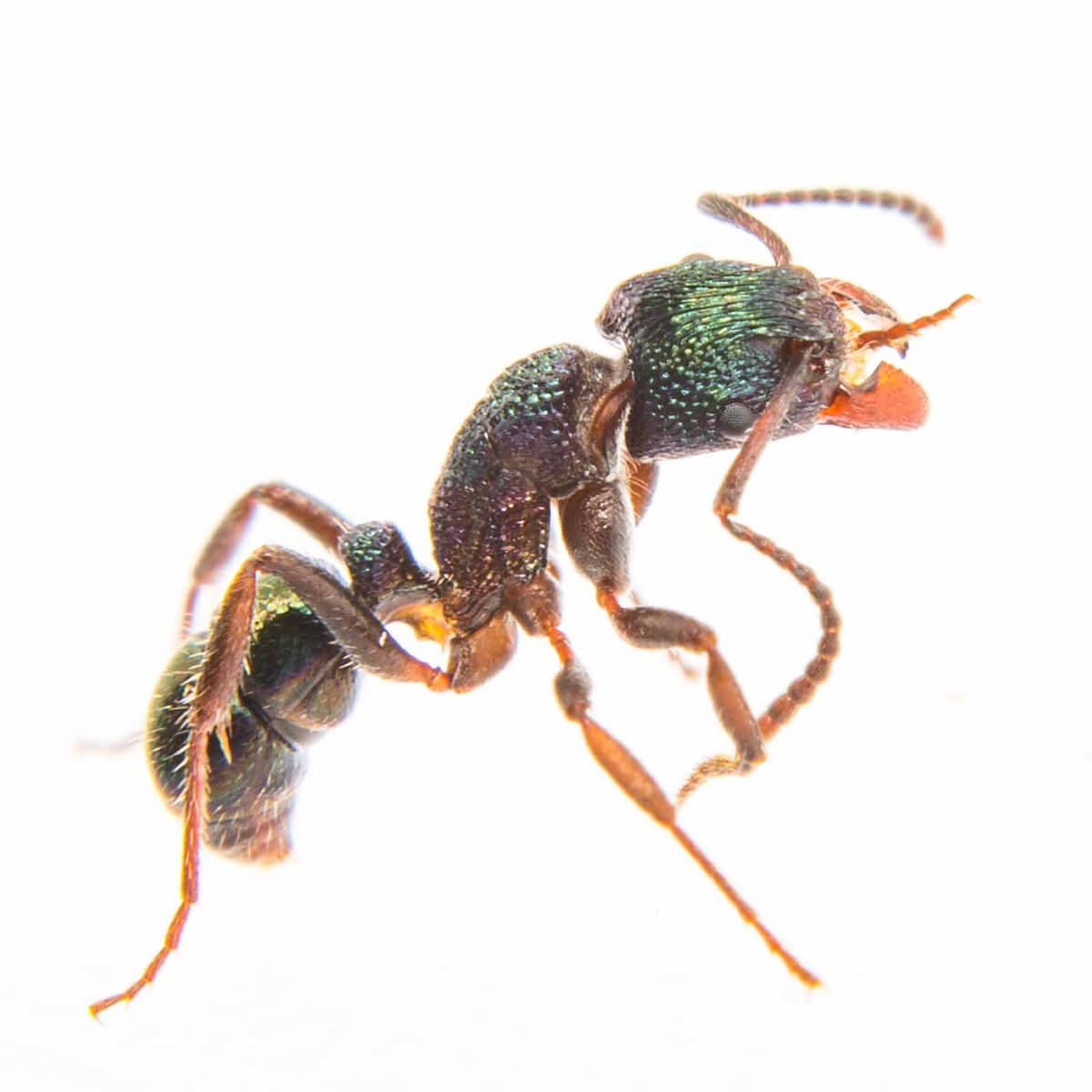Green-head Ants
You may know them as green-head ants (Rhytidoponera metallica), but metallic pony ants or just green ants are also popular names for these insects. Despite their impressive look, these little crawlers should not be taken lightly because of their dangerous and venomous sting. The green ants are well-distributed in Australia and are definitely something you don’t want to mess with.
Green-head ant characteristics

- Scientific name: Rhytidoponera metallica
- Colour: Dark brown torso with a green or purple gleam
- Legs: 6
- Body: Monomorphic with a winged class, too.
- Size: 5-7 mm long
- Antennae: 2
- Bites or stings: They can bite, but their sting is more dangerous.
- Danger: More sensitive people and kids could suffer a serious allergic reaction even from a single sting.
- Region: Southern and Western Australia, less common in the Northern parts.
Green-headed ants' life cycle
- Unlike other ant species, the green-headed male ants don’t necessarily need a queen to mate. They can do it with workers, which can reproduce on their own.
- Once fertilised, such workers can successfully establish their own colony to take care of the newly-hatched larvae.
- Budding is another way that colonies are formed. This is when a part of the colony separates and creates a new nest, normally due to the fact that only male ants are born in a worker-established colony.
Find out more about: Carpenter ants
Green-head ants' habits
- Green-head ants usually build their nests in soil, shrubs, wood, grassroots and also beneath big stones. This makes gardens an attractive nesting place for the little crawlers and this is why they are commonly found in urban areas.
- It is possible for green-head ants to abandon their nest and move to another more suitable location. This usually happens if the food supply is insufficient and a more promising spot is discovered.
- Green-head ants like to eat various things. Since they are omnivores, they can easily survive on both a protein and a carbohydrates diet, depending on what they can access.
Facts about green-head ants
- The bigger the colony, the greater the distance a green ant can cover in search of supplies.
- Green-headed ants are quite resilient. Even if there is a fire or rain, these little insects will be among the first out and about, looking for food to carry back to their nest.
- Although the green-head ant is commonly referred to as just a “green ant”, in the Eastern parts of Australia, specifically Queensland, this is how the green-tree ant is also called.